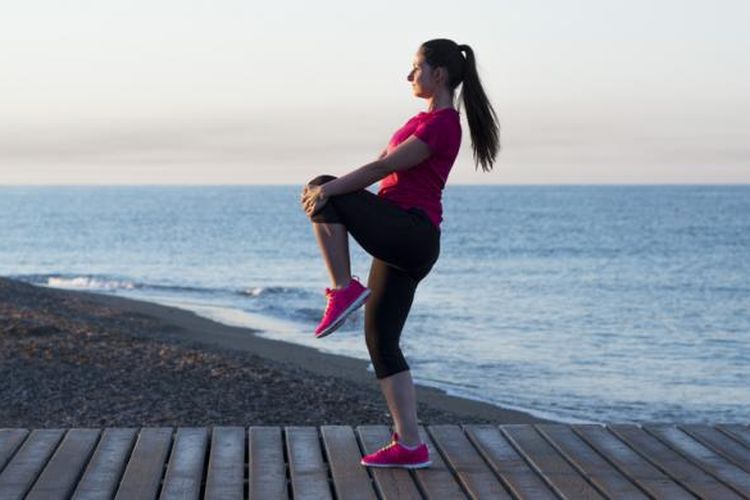Magazine
There’s Some Warm-up Before Exercise!
Sport is one of the activities that support one’s health, besides that exercise is also an activity that can produce various benefits for one’s body. Some doctors and experts always recommend sports activities to get a healthy and fit body.
However, when doing sports there are things that need to be considered so that the body can feel the benefits of exercise. Doing the right movement, is one thing that needs attention. In addition, warming up before exercise is also important.
Because if the exercise is done without warming up, it can cause the muscles of the body to be shocked. Instead of being healthy, Grameds can actually accept risks such as muscle cramps and cramps during exercise. Therefore, it is important to warm up. Then, what is a good exercise warm-up movement? Check out the following!
Warming up is an important step that needs to be done before exercise. Warming up needs to be done to avoid injury when doing sports, such as sprains and others.
In addition to avoiding injury, the warm-up also aims to maximize the main sport that Grameds will do. Warming up can also make the muscles of the body easier to do strenuous activities.
Here are seven types of warm-up movements that must be done, before exercising.
- Passive Heating
Passive heating is a type of warm-up that can be done with a partner. This type of heating is done by standing, then the waist is leaned against the wall. Then, the partner can lift the leg and stretch the hamstring.
Passive heating is useful for reducing muscle fatigue, pain after exercise so as to prevent muscle spasms.
- Dynamic Heating
A dynamic warm-up will require slow foot and hand control. When doing a dynamic warm-up, the body part will move at a speed which then increases gradually and slowly. Increase in speed when doing dynamic warm-up, can be done simultaneously or gradually. Do it comfortably.
- Static Heating
The third type of heating is static heating. This warm-up needs to be done from head to toe and doesn’t involve a lot of movement when done. Static warm-up is mostly done, especially in the process of learning sports in schools.
Examples include turning your head to stretching your legs for 30 seconds. Movement in static warm-up is also lighter, and less painful.
- Insulated Active Heating
Unlike the static warm-up that is done in schools, isolated active warm-ups are commonly done by coaches, massage therapists and athletes. Isolated active warm-up aims to be able to train the body’s muscles, so it is only done by people who are experts.
An example of an isolated active warm-up is to put your feet up in a sleeping position, then hold your feet in that position for a few seconds.
- Ballistic Heating
When warming up ballistics, warm-up movements need to be done with care, as they can cause injury. Therefore, ballistic warm-up is only done by athletes and professionals.
Ballistic warm-up, is done by pushing body parts beyond the limits of normal movement. Although it sounds dangerous and must be done carefully, this ballistic warm-up has the benefit of being able to stretch the muscles so that the movement performed when exercising will increase.
- Isometric Heating
Just like passive heating, isometric heating can be done together with a partner. Isometric heating is heating that is done by holding the position of the heating movement for some time. Isometric warm-up movements can be done with a partner, if you find it difficult when you have to hold certain movements.
For example, lifting your legs high. The partner needs to help hold the leg, and the leg movement needs to be pushed in the opposite direction.
Isometric heating is safe to do without the need for an expert, the purpose of isometric heating itself is to strengthen tendons and ligaments, and increase the range of movement in the joints.
- Neuromuscular Proprioception
This seventh type of heating is a combined heating movement from several other types of heating, namely passive heating, isometric heating and static heating. Movements in the neuromuscular proprioception warm-up need to be carried out simultaneously, so that a person can achieve a high level of muscle flexibility. In accordance with the purpose of this warm-up, the neuromuscular proprioception warm-up is an exercise in muscle flexibility and flexibilit
Source: gramedia


